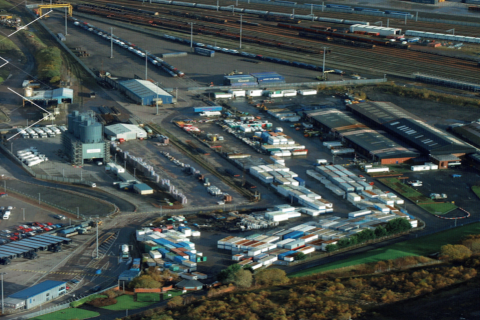‘Kaunas terminal will be Lithuania’s hub for the years to come’

Poland’s role in enhancing the Lithuanian intermodal market will intensify in the near future. Kaunas will become the central hub and gateway for intermodal flows in the Baltic country and the key point to connect Estonian, Latvian and Lithuanian ports with Central and Western Europe. “We definitely see Kaunas as our hub terminal,” commented Maciej Cetnerowski, intermodal development director at LTG Cargo Polska.
Cetnerowski emphasised the intermodal relevance that Poland and Kaunas Intermodal Terminal have for Lithuania in a panel discussion during the RailFreight On Tour-The Lithuanian Edition that took place in Vilnius last week. He emphasised that LTG will utilise Poland in the same way it does now for intermodal connections, while Kaunas will function as the key location to make this happen.
A recent but crucial network addition
“The new intermodal opportunities emerged when the Kaunas Intermodal Terminal (KIT) was connected to the European rail network since 2021 and when the route alternative was approved for the future construction of the Rail Baltica railway from Kaunas to the border with Poland in Sestokai. It will certainly be our most important entry point for years to come,” Cetnerowski underscored.
“Now, we are using Poland as a transit country – we are utilising the trains all the way from Kaunas to Duisburg, which is essential in handling cargo from Ukraine, too,” he added.
More standard gauge lines
Despite Kaunas intermodal terminal operating with dual gauge lines (1,435mm and 1,523mm), transhipment on the border with Poland still hinders intermodal connections’ efficiency and speed. As a result, “the optimal route of Rail Baltica between Kaunas and the border with Poland was chosen to be alternative 6A, according to which a new 1,435 mm railway track is planned to be built in a place where there was no railway track altogether”.
This means that soon Poland and Lithuania will connect with a European gauge line, facilitating rail connections and altering the current capacity restrictions. “Speaking of the capacity, we estimate that we can do up to 12 trains during a working day at the border. Starting in September 2022, the border will start working 24/7,” said Centerowski while explaining that making the Polish-Lithuanian border crossing more efficient will start immediately.
Nevertheless, a standard gauge connection between Poland and Lithuania is not the only project that will allow Kaunas to become an intermodal hub. “Regional Rail Baltica stations are planned not only in Sestokai but also in Marijampole, a town in southwestern Lithuania, also in proximity to the Polish-Lithuanian border. Both will be connected to the main railway line by regional connections”. According to Centerowski, Sestokai will have a smaller capacity as far as the storage is concerned. Still, its importance rises from being a site where the cargo will be switched from one rail gauge width to the other,” he said.
Poland replaces Belarus and opens new routes
“Until very recently, Lithuania was doing a lot of railway business with Belarus, Russia and the other CIS countries, mostly under the wide gauge. But Poland seems that will replace Belarus as a transit country between Ukraine and the Baltics and beyond,” Cetnerowski underlined.
“We need to find more connections from Kaunas to Poland, so we aim to connect Kaunas with Poland as much as possible, especially with the south of Poland. And beyond – connect us through the border terminals to clients in Southern and Western Europe, like Italy and Turkey. This could be achieved by collaborating with other carriers,” he underscored.
One major milestone in this sense is improving the intermodal connectivity by launching test trains between Gdansk and Kaunas, he added. “As we are seeing an increased interest in the connection from our clients, this service will become regular within a couple of next weeks.”
Also read:
You just read one of our premium articles free of charge
Want full access? Take advantage of our exclusive offer





